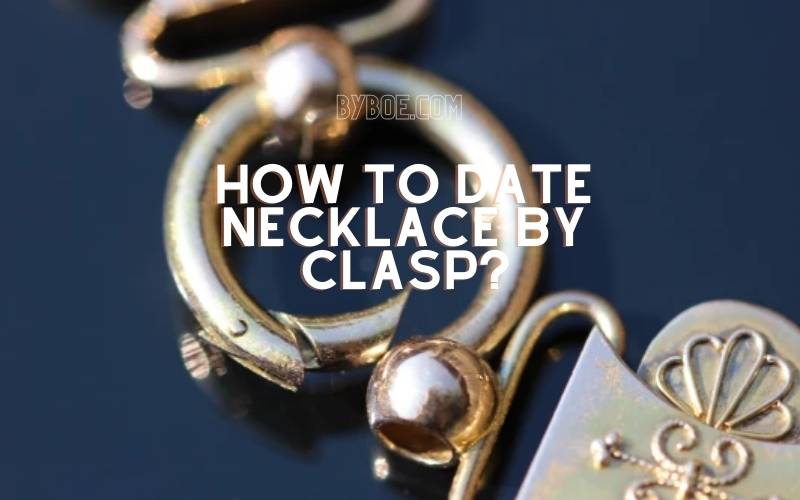There are a few different ways to date a necklace by the clasp. One way is to look at the style of the clasp. Clasps have been around for centuries, and they have evolved. So, by looking at the type of clasp, you can get a general idea of when the necklace was made.
Another way to date a necklace by clasp is to look at the materials used in the clasp. Keep reading this article; Byboe will show you How to Date Necklace by Clasp? And other tips.
Table of Contents
How to Date Necklace by Clasp?
Vintage generally refers to items made within the last 100 years. Small details of craftsmanship can help determine if the jewelry is genuine vintage.
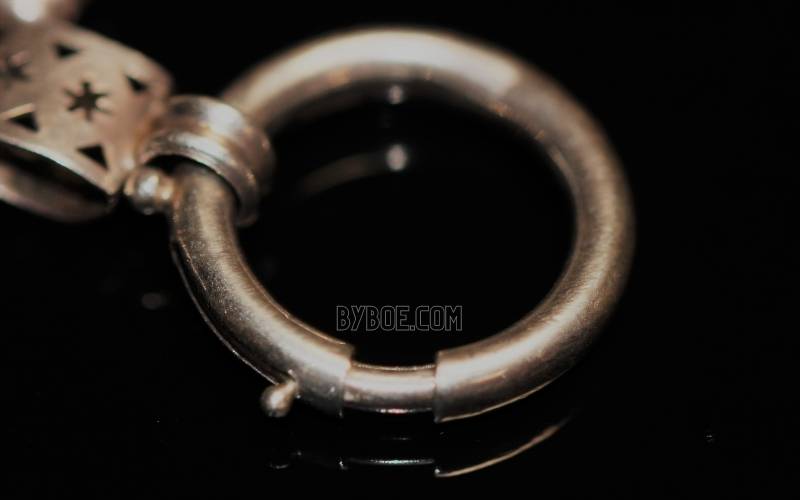
Collectors and buyers can use clasps, chains, patina, and other small details to determine what kind of vintage jewelry they have and how much it may be worth.
Clasps
Modern jewelers still use many vintage clasps, but you can better understand when your jewelry was made.
Hook Clasp: This clasp is reminiscent of a shepherd’s hook and was used to attach multi-stringed necklaces in the 1950s & 1960s.
Barrel Clasp: A very common vintage fastener. The barrel clasp is a literal barrel that screws into each other and connects to the ends of bracelets or necklaces.
The Fishhook Clasp is a decorative variation of the Box Clasp. It resembles a shepherd’s loop and locks the horizontal hook into an ornamental ‘fish-shaped’ box. Because of its delicate appearance, it was widespread in jewelry from the early 20th century.
Lobster claw Clasp: This spring-loaded clasp, which looks a lot like a handcuff and fastens to the links of the chain, gained popularity in the 1970s. It is still widely used today.
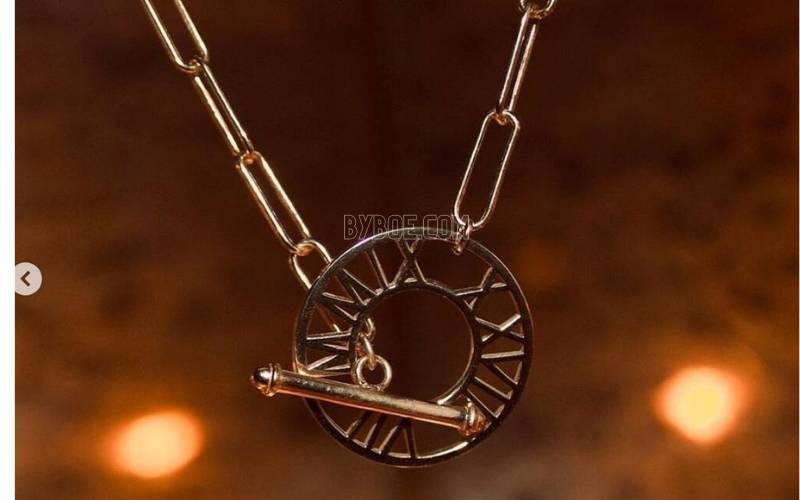
Chains
Different chain styles and materials, along with clasps, can help identify if a piece is from a particular historical period.
Sautoir is a French term that refers to a necklace that suspends a tassel or another ornament. These necklaces were trendy around the turn of the 20th century.
Brick-Style: The brick-style chain, which is appropriately referred to, is made to look like layers of bricks with rectangular brick links. Brick-link bracelets became fashionable in the 1940s.
Bakelite: This non-metal material was in fashion during the first and middle of the 20th century. Jewelry and bakelite chains were trendy.
Filigree is a delicate process in which jewelers take metal threads and twist/weave them into intricate designs that are then soldered in their place. Filigree chains were very popular during the Edwardian era.
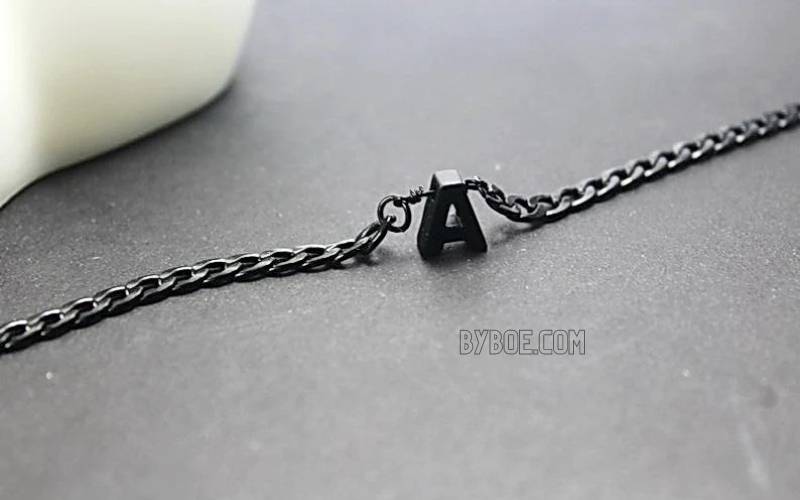
How to Identify the Materials of Black Jewelry
You can find black jewelry at antique shops, estate sales, flea markets, and flea markets. It is important to identify the source of the black material so that you can determine when it was made and its value.
Black jewelry is most likely made from one of these materials: plastic, glass, or stone. Each of these materials can be tested to find out what it is.
Plastic is the most accessible material to understand. Plastic is lightweight, and you can feel it clicking on your teeth.
Look for a mold line with your loupe. The mold line will run around the piece and split it in half.
Glass is heavier and will reflect light. It will warm up if you hold it in your hands.
Stone would stay cold if it were held in your hands.
Jet is light and as strong as plastic. It’s also complicated and similar to coal. This is a fossilized wood material first discovered in Whitby, England, in the middle of 1800.
In Whitby, there were over 200 jet shops by 1870. Jet can still be found in the seams of Whitby’s cliff walls. Jet is now illegal to mine, making it extremely valuable.
Rub the material on clay pottery or concrete to test for the jet. If the material leaves a line of brownish-black marks, it is likely to be jet. Jet can break easily, just a reminder.
Gutta-percha is also available in black. It is made from the sap from a Malayan tree. It was popularized in the Victorian Era.
It will emit a strong, rubbery smell when it is heated. To create friction, you can rub the material on your clothes. This material was first introduced to England in 1841.
Crepe stone, another black material, is made from glass. It was first introduced by the Fowler brothers of Providence, Rhode Island, in 1883. It was initially called English Crepe Stone. It is a very distinct photo shown.
Bog oak, another black material, is easy to recognize because it is oak wood preserved in the bogs. The Irish motifs make this jewelry easily identifiable.
Bakelite can also be made black. Bakelite is a phenolic, very popular in the 1930s and 1920s. Bakelite can be tested using 409 bathroom cleaners on cotton swabs and touching a small area. Bakelite is a yellowing of the cotton swab after it touches the surface of the test piece.
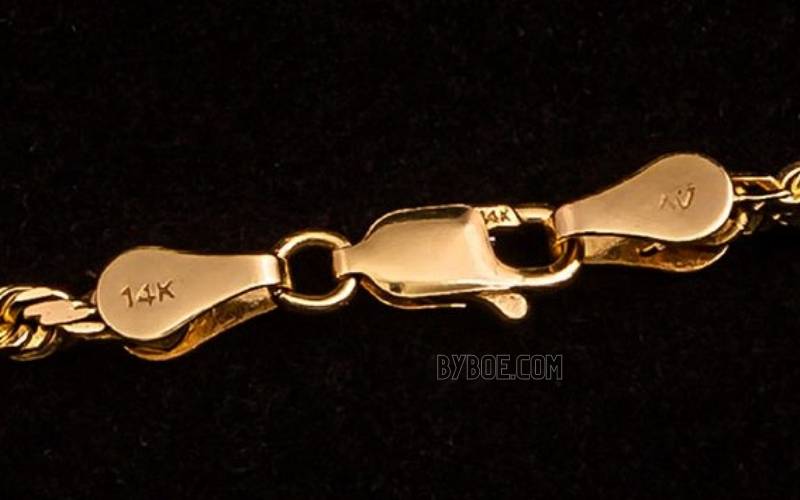
Using Color to Date Your Jewelry
Color gemstones and enamel are correlated to the architecture and decorative arts of the time. The Renaissance’s use of color was almost extravagant.
In contrast, Victorian Era color was more severe after the death of Prince Albert, which caused Queen Victoria to announce a prolonged period of mourning.
The period of Art Nouveau used delicate colors and rich gold and silver medals after the Victorian Era. The heirloom was the Art Deco era, which featured bolder colors and more geometric designs. A devil-may-care attitude influenced the look.
Different periods in history saw different color palettes. It is essential to know which colors were dominant at specific times in history to date a piece.
You should clean your jewelry the right way, Let’s us show you some tips to keep your necklace clean:
Dating Vintage Jewelry by Style
Art Nouveau, Edwardian, and Art Deco are some of the most significant periods that vintage jewelry can be sourced.
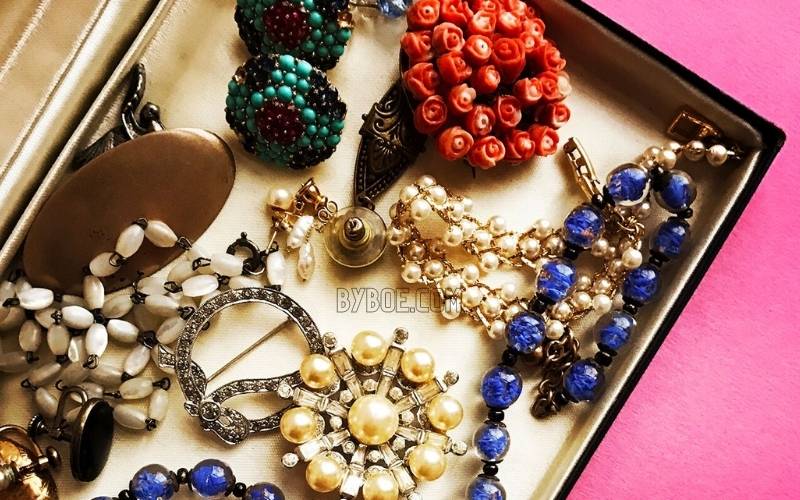
The decade they were most prevalent in is usually used to identify pieces made in the 1970s, 1980s, and 1990s. These pieces are generally less valuable than jewelry from the previous decades.
Each period has its jewelry, so it is essential to identify these characteristics to determine the value of your vintage jewelry.
Art Nouveau (1890 -1910)
Traits of Art Nouveau jewelry include:
- Brightly colored semi-precious gems such as peridot and opal can be included.
- Illustrations of organic motifs such as vines, plants, insects, and so forth
- Enamel highlights in porcelain accompany these colorful gemstones and other organic motifs
Edwardian (1901 – 1914)
These characteristics may help you recognize Edwardian jewelry.
- Use of white metals, such as platinum, white gold, or diamonds, is encouraged.
- Millegrain details are added to necklaces, rings, and bracelets. This technical process involves adding tiny metal beads to make ornate borders to jewelry.
- Use of filigree in necklaces, bracelets, and rings
Art Deco (1920 – 1935)
Art Deco jewelry also has distinctive characteristics:
- Ring settings often include geometric lines and shapes.
- There are caliber gems, which are cut gemstones precisely to fit the arrangement of a jeweled piece.
- Asscher and baguette were new gemstone cuts. These rectangular and multifaceted shapes reflect this era’s fascination for geometric lines.
Retro (1935 – 1945)
Retro jewelry is a collection of over-the-top styles and themes.
Due to wartime rationing in the 1940s, semi-precious metals such as rose gold and fill have been used more frequently.
Bold jewelry designs that are boldly inspired by Hollywood glamour
Mid-Century (1945 – 1969)
These are some of the characteristics that jewelry from the mid 20th century might have:
Luxury brands such as Tiffany & Co. and Cartier were born out of post-war economic prosperity.
The return to expensive metals such as platinum and gold
Use bright, bold colors

How to Determine the Value of Vintage Jewelry?
Vintage jewelry’s value will be determined by its quality, rarity, and cut. The most important thing is the material and age of the jewelry pieces.
Jewelry made in the 1910s will be more valuable than jewelry made in the 1980s. Platinum, one of the rarest metals, will also have a higher value than jewelry made in the 1980s.
A diamond eternity band dating from the Edwardian period sells for $2,100 at Isadora’s Antique Jewelry shop. A set of Tiffany & Co. wedding rings sells for $1,950 at Three Graces Fine Jewelry.
This 1950s emerald paste wedding ring is listed at ruby lane for only $200. Although not all vintage jewelry is worth thousands of dollars each, the shiny silver necklace found in the consignment box might be worth more than $5.
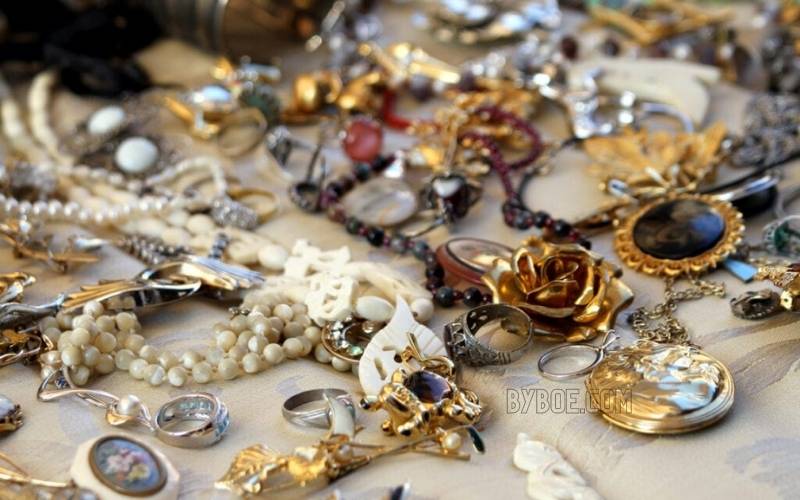
When to Keep and When to Sell Your Vintage Jewelry
Some people feel that selling vintage jewelry is not an option. The sentimental value of jewelry that has been passed down through generations can make it seem like a betrayal to give any piece to someone else.
Knowing the history behind the necklace, your great-grandmother left you alone for many years, can help you connect with the past people.
Knowing the value of your vintage jewelry can help you care for them better and make it last generations. If you decide to sell your pieces, you’ll be prepared with the information you need to get the best price for your items.
How to Date Jewelry? Conclusion
To date, a necklace by the clasp first identifies the type of clasp on the chain. There are many different types of clasps, so it is essential to know which one you are looking for. Once you have identified the clasp type, do a quick online search to find out when that type of clasp was first used. We hope that our guide can help you know how to check your jewelry

